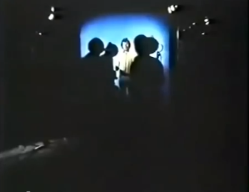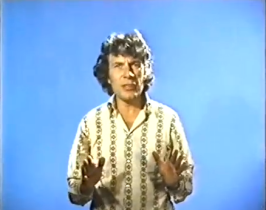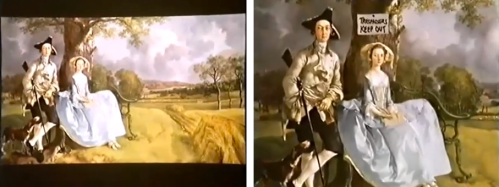Written and presented by John Berger, Ways of Seeing was both highly influential and controversial. The four part series of thirty-minute episodes aired on BBC 2 in 1972. Being broadcast only three years after Clark’s Civilisation, Ways of Seeing could not escape being compared to BBC 2’s most popular pundit arts and culture series. However, despite the familiar style of a presenter providing pieces to camera and narration, there were a number of fundamental differences between Ways of Seeing and Civilisation in regards to both the style and ideologies of the programmes.
In contrast to Clark’s celebratory traditionalist approach to Western culture, Berger provides a far more radical critique of art, analysing the social conditions in which it was produced, reflecting his own socialist political leanings.
Berger’s underlying focus throughout the series centres on the ways in which the very medium of television inherently alters the reception of art. In the first episode, clips taken from Dziga Vertov’s influential Man With a Movie Camera are used to illustrate this idea of a new constructed reality presented through the medium of film.
The series take s a self-reflexive approach, consistently making the audience aware that they are watching something constructed, rather than viewing reality through the window of a television screen. This reflexivity is most apparent during the first episode when the camera cuts to a long shot of the studio to include the other cameras, lights, crew, etc.
s a self-reflexive approach, consistently making the audience aware that they are watching something constructed, rather than viewing reality through the window of a television screen. This reflexivity is most apparent during the first episode when the camera cuts to a long shot of the studio to include the other cameras, lights, crew, etc.
Fundamental to Berger’s analysis of how art is presented on film is the concept of reproduction. Berger argues that the means of reproducing art strips it of its original context and meaning, making it susceptible to multiple meanings that arise from the many different contexts in which it can be presented and displayed.
 Berger’s mode of address is similar to Clark’s in that he speaks directly to the camera, often for long periods of time without any cuts. This again creates the sense of immediacy and a one-to-one encounter with the presenter. However, in contrast to Clarke, Berger is informally dressed and speaks with a degree of persuasive conviction. Most notably, Berger’s pieces to camera are predominantly shot within the same studio against the same plain backdrop.
Berger’s mode of address is similar to Clark’s in that he speaks directly to the camera, often for long periods of time without any cuts. This again creates the sense of immediacy and a one-to-one encounter with the presenter. However, in contrast to Clarke, Berger is informally dressed and speaks with a degree of persuasive conviction. Most notably, Berger’s pieces to camera are predominantly shot within the same studio against the same plain backdrop.
Ways of Seeing received a substantially smaller audience than Civilisation when it first aired. However, it had a long afterlife with the publication of articles and books based on the series. The series was also shown in art colleges and other educational institutions. The prevalence of the series being used within educational contexts demonstrates how Berger’s style of critique provides groundwork on which to discuss the theories presented within the programme. Whereas Civilisation brought works of art to the masses, Ways of Seeing opened up these works for critique and debate.


